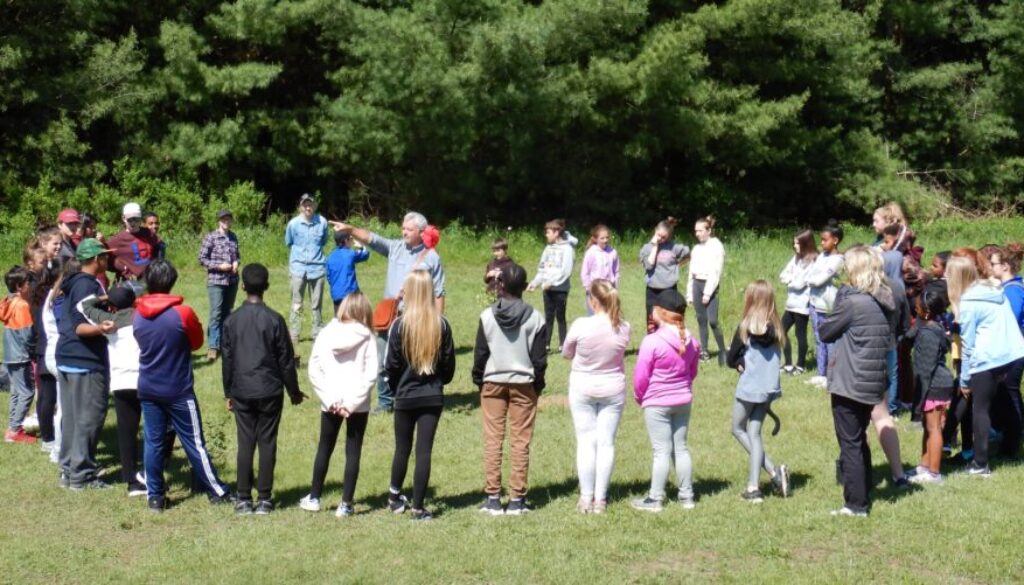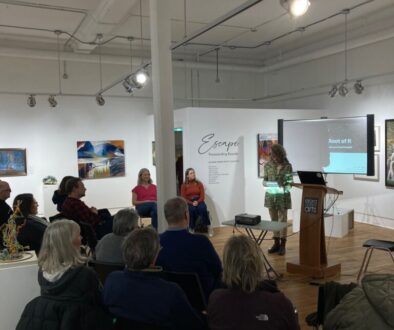Tree Talk: Nov 10, 2021, The Ignatius Old Growth Forest Project
Presented by Martin Tamlyn, manager of the Old Growth Forest Project
The Old Growth Forest is a 93-acre nature sanctuary on the north edge of Guelph. It is protected by a Conservation Easement with the Ontario Farmland Trust. The Project’s goal is to restore and protect diverse ecological communities and to assist the regeneration of retired farmland, from old-field meadow to old-growth forest.
Martin Tamlyn gave us an inspirational talk about how the project originated, what has been done to date, and what is planned for the future.
Here are some of the main points Martin outlined:
- The Old Growth Forest (OGF) is an initiative of the Ignatius Jesuit Centre, whose mission is to enhance spiritual growth through ecological engagement.
- The area that is now the OGF is on the east side of Highway 6, opposite to the Jesuit Centre. It was once clear-cut farmland.
- The area contains 17 different ecological communities, including marshes, wetlands, forests, meadows, and waterways. Each has its own restoration needs.
- The motivation to create the OGF arose from several factors:
- All inhabitants of a community (which includes far more than just us humans!) need natural areas for physical, mental, and spiritual health, in addition to the often-cited ‘ecological services’ that green spaces provide, such as clean air, flood control, pollination, etc.
- As urban areas grow, natural areas shrink and decline.
- Southern Ontario forests have been reduced to small disconnected plots.
- A tree canopy that covers 35% of the area is the goal for a healthy environment. Wellington County currently has 17% and many areas have less.
- Native trees can be tens or hundreds of times more effective in supporting insect and bird communities, than non-native trees.
- Other ecosystems require restoration as well — for example a healthy grassland supports a diversity of native plants, insects, birds, mammals, and more.
- Hence the need for more reforestation and restoration. Wellington County has adopted a Natural Heritage Strategy, to connect patches of forest and natural spaces to each other.
- The first step in restoration is to investigate what’s there, in terms of plant and animal species, then plan how to remove invasive species and increase diversity.
- Some of the innovative projects worked on to date include:
- Transformation of the Mill Pond on the east side of Highway 6, from a stagnant pond to a healthy, flowing waterway supporting a thriving community of native plants, fish, and other organisms
- Using water DNA analysis to reveal all of the species living in a body of water
- Collecting Christmas trees and using them for mulch and to shore up creek banks
- Seed collecting, involving school kids and volunteers in the process of finding, sorting, and saving native seeds for planting in future seasons
- Education is a fundamental part of the project. The program helps people understand why ecological restoration is important, not just how to do it.
- The tools and processes of restoration are designed to be accessible to school-age children and general community members. They receive training and get involved in hands-on tasks such as planting trees and removing invasive plants.
- The project encourages people to see that we are all part of nature, on the same level as all other organisms, using the concept of the circle rather than a hierarchy. It also aims to incorporate Indigenous knowledge and take a ‘wholistic’ approach to how we care for this planet.
- The project seeks ways for us to ‘be a good ancestor’ for future generations who will live on this land.
Some of the questions raised and discussed after the talk:
- What work has been done to restore the soil itself?
- Remediations include: adding mulched leaves; burying ash logs; removing non-native plants; making charcoal from the non-natives to add to the soil; adjusting plantings to put in species that can deal with poor soil.
- What is the source for the trees that are planted in the OGF?
- A large percentage are from Green Legacy; other sources are the GRCA Natural Area Restoration project (NAR), and the Rural Water Quality program. These programs are funded by the County of Wellington.
For further exploration:
- The Old Growth Forest is open for trail walking, year-round. Information and maps can be found here.
Neighbourwoods thanks our 2021-22 Tree Talk sponsor, the Elora and Salem Horticultural Society, for their support.




